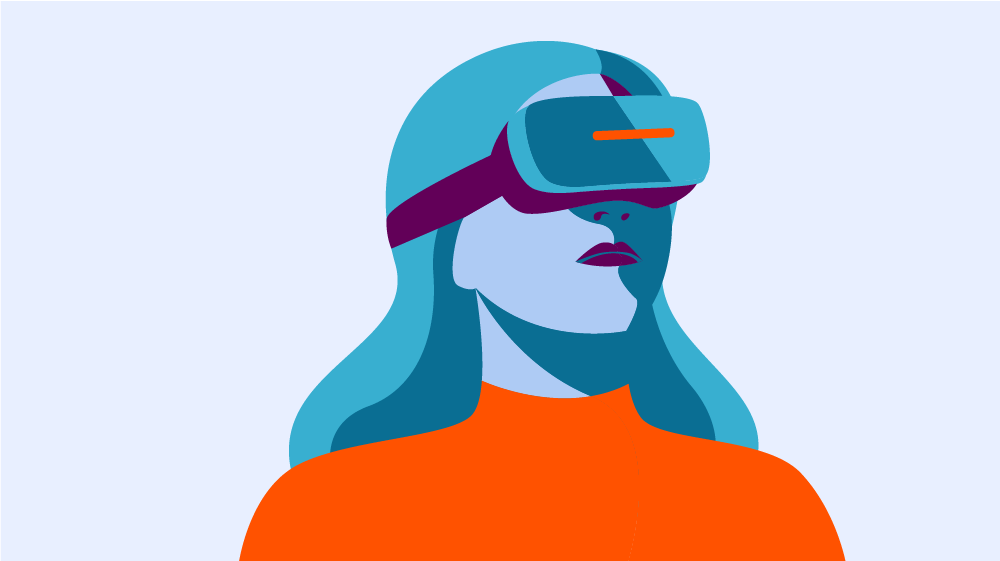Back when people referred to the internet as ‘cyberspace’ or the ‘information superhighway,’ the concept of the metaverse seemed like a futuristic oddity – something scary and science fiction like The Matrix.
That’s no longer the case. Facebook founder Mark Zuckerberg, rebranding his company Meta, has hailed the metaverse as “the next evolution of social connection,” envisioning a world where everything – teaching, business, gaming, meeting friends – can all happen in a virtual world.
In essence, the metaverse is the internet drawn in 3D. But what does the creation of a massive online world mean for the future – and how does it impact us as responsible investors?
To some the metaverse is nothing new
To the more than 3 billion playing video games globally, the idea of an expansive virtual world, where users adopt an online avatar to interact with each other, is nothing new.
Something like Second Life, released nearly 20 years ago, allows its users to build, create, shop and trade with each other – and their virtual assets have a real monetary value.
What companies like Meta aim to do is move the concept even further past the gaming sphere. In a world that quickly adjusted to hosting work events on Teams and Zoom during the pandemic, the metaverse is a potential forum for bringing large corporations closer together or reducing travel to global events.
We’re already part of the way there. During lockdown, museums and art galleries made more use of ‘virtual tours’, at-home cyclists using Zwift took part in their own virtual Tour De France from the comfort of their living rooms. Floyd Mayweather Jr’s boxing match against YouTuber Deji Olatunji in November became the first ever fight to be streamed live via the metaverse.
The impact – both the good and the bad
As the metaverse becomes increasingly more mainstream, there will be positive and negative impacts for our lives, and of course from a responsible investing perspective.
The good:
With reduced need for travel, the metaverse can go a long way to reducing carbon footprints. With Increased use of ‘digital twin’ technology, companies can recreate virtual versions of large structures, entire buildings, or complex machinery. Some physical site visits could be cut completely.
Greater use of digital twins and virtual environments can also help workplaces safer. A factory could in theory use the technology to perfect workflow and eliminate health and safety incidents.
VR technology also has a large potential role in healthcare, for example, helping teach new surgeons and assess their competence before they operate; reduce the amounts of invasive surgery; or explore areas that are complicated to access. The major benefit would be greatly improved survival rates from operations.
The bad:
On the downside, creating the metaverse requires a lot of data – and masses of energy to crunch it. Back in 2006, Second Life needed 4,000 computer servers running continuously at full power to for its 10,000 to 15,000 players at any given time.
Times have changed, and computers continue to become more efficient, but the data requirements are still gargantuan. The power demand for Bitcoin mining fluctuates, but regularly has annual energy consumption of more than a small country. [1] With Meta unveiling what it says will be the world’s fastest AI supercomputer, creating the huge digital worlds necessary to expands the metaverse will also be a drain on energy resources.
Alongside this, there is the question of privacy and data security. We’ve seen numerous high-profile data breaches in recent years. Notably At Google, which exposed the private data of more than 500,000 users in 2018, and the Facebook/Cambridge Analytica scandal. These breaches leave users exposed financially and open to harassment online and raise governance questions for companies and their investors.
So how real is the metaverse anyway?
Looking past the hype, no matter how good we’ve got at Zoom calls, it’s still hard to see the metaverse can totally replace genuine human interaction. But it can augment our lives in the physical world and it’s hard to deny its growing presence.
For example much of Generation Z’s recent education will have been virtual, and they’ve grown up with the norms of socialising through gaming and paying for everything with smartphones.
Expanding the virtual world comes with huge environmental, social and governance challenges, but for this next generation, the possibilities and positives of the metaverse far outweigh the negatives.
[1] According to the University of Cambridge’s Bitcoin Electricity Index, Bitcoin’s annualised consumption as of 23 November, more than countries including Finland and Belgium.
